7 Examples of Green Architecture Around the World
By Microsol Resources, Graitec Group | Sustainability
Green architecture is a planning, design, and construction approach for buildings that aims to protect both the health of the planet and its occupants. To do so, it utilizes sustainable materials, reduces water and energy usage, creates healthy interiors, and integrates the natural environment. This eco-friendly architectural method is also commonly referred to as green design or green building. Unlike many other design philosophies, green architecture ensures that People and the Planet don’t get pushed to the backburner for Profit—all three work in tandem.
Green architecture is a big win for the environment and human health while also benefiting clients’ wallets with its unique selling point (USP) and long-term operational savings.
Understanding the Environmental Benefits of Green Architecture
The demand for sustainable buildings continues to increase as concern about climate change grows and new sustainability goals are set. For example, for the U.S. to reach its net-zero goal by 2050, investments in energy efficient buildings worldwide between 2026 and 2030 would need to total over half a trillion U.S. dollars.
Green architecture and its environmental benefits are the key to reaching lofty sustainability goals like this. Especially considering that the benefits of green building apply not only to the initial build but also to the fully operational structure.
- Energy Efficiency: Proper insulation to reduce the need for heating and air conditioning. Renewable energy sources, such as solar energy, wind, or geothermal.
- Reduced Water Usage: Rainwater harvesting, cooling systems using water runoff and local sources, reuse of wastewater, etc.
- Sustainable Materials: Locally sourced building materials and reclaimed or recycled materials. This also includes materials that capture carbon.
- Smart Technology: Using collaborative technology, such as the Autodesk AEC Collection, for remote work to reduce carbon emissions produced during construction. These programs’ AI and machine learning can also reduce energy usage and material water to further reduce a project’s carbon footprint.
- Healthy User Environment: Design and materials that do not harm to an occupant’s health—and ideally benefit it. This may include using low VOC materials for better air quality, integrating plants and other biophilic design elements, rooftop gardens or other green spaces, etc.
- Preservation of Current Environment: Sustainable developments consider the surrounding natural and built environment. Often, they build around/integrate natural elements, such as rock cuts and trees, instead of removing them. This may also include repurposing an old building (adaptive reuse architecture).
- Less & More Effective Maintenance: Quality materials mean it will take longer for wear and tear to happen. Therefore, less maintenance/new material usage. In addition, emerging architecture technologies, such as digital twins, can predict material and labor cycles to reduce waste.
Green Architecture Around the World
1. Pixel Building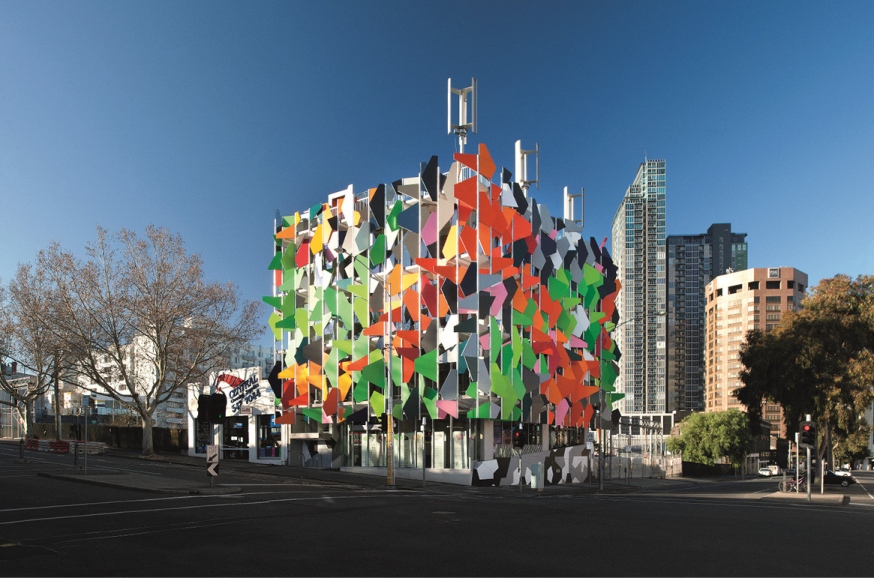
Year: 2010 l Location: Melbourne, Australia l Architect & Photo Source: Studio 505
The carbon-neutral Google Pixel building in Australia is a leader in sustainable architecture. The façade of the building is well-known for its vibrant and flowing geometric form. However, this design isn’t just for aesthetics—it artfully integrates solar panels, a green roof, fixed shading louvers, and double-glazed window walls. Additionally, this office features one of the most sophisticated water treatment and utilization systems ever built, providing a self-sustained water supply. Thanks to these amenities, the Pixel secured the highest BREEAM (Building Research Establishment Environmental Assessment Method) and LEED (Leadership in Energy and Environmental Design) ratings.
2. Southwest Library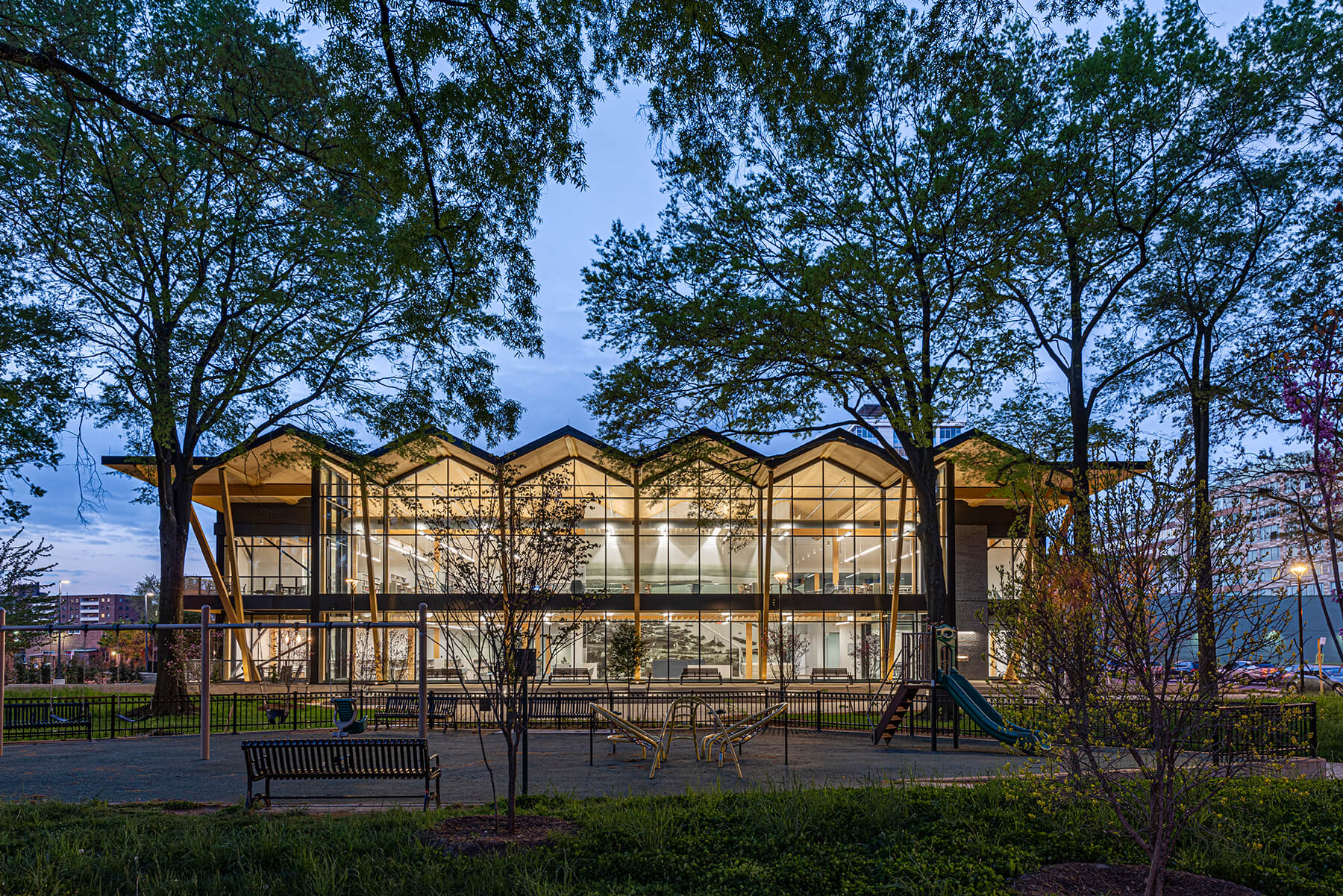
Year: 2021 l Location: Washington, DC, USA l Architect & Photo Source: Perkins & Will
The Southwest Library is a sleek community space heavily inspired by mid-century modern design with its simplicity, organic forms, and wood finishes. It features floor-to-ceiling windows so patrons can enjoy the view of the surrounding greenery and ample sunlight. Solar panels affixed to the angular roof allow this build to perform 52% better in energy consumption than a code-dictated building of the same size and usage. This combined with its regionally sourced materials and water conservation efforts earned this library an LEED platinum certification.
3. The Edge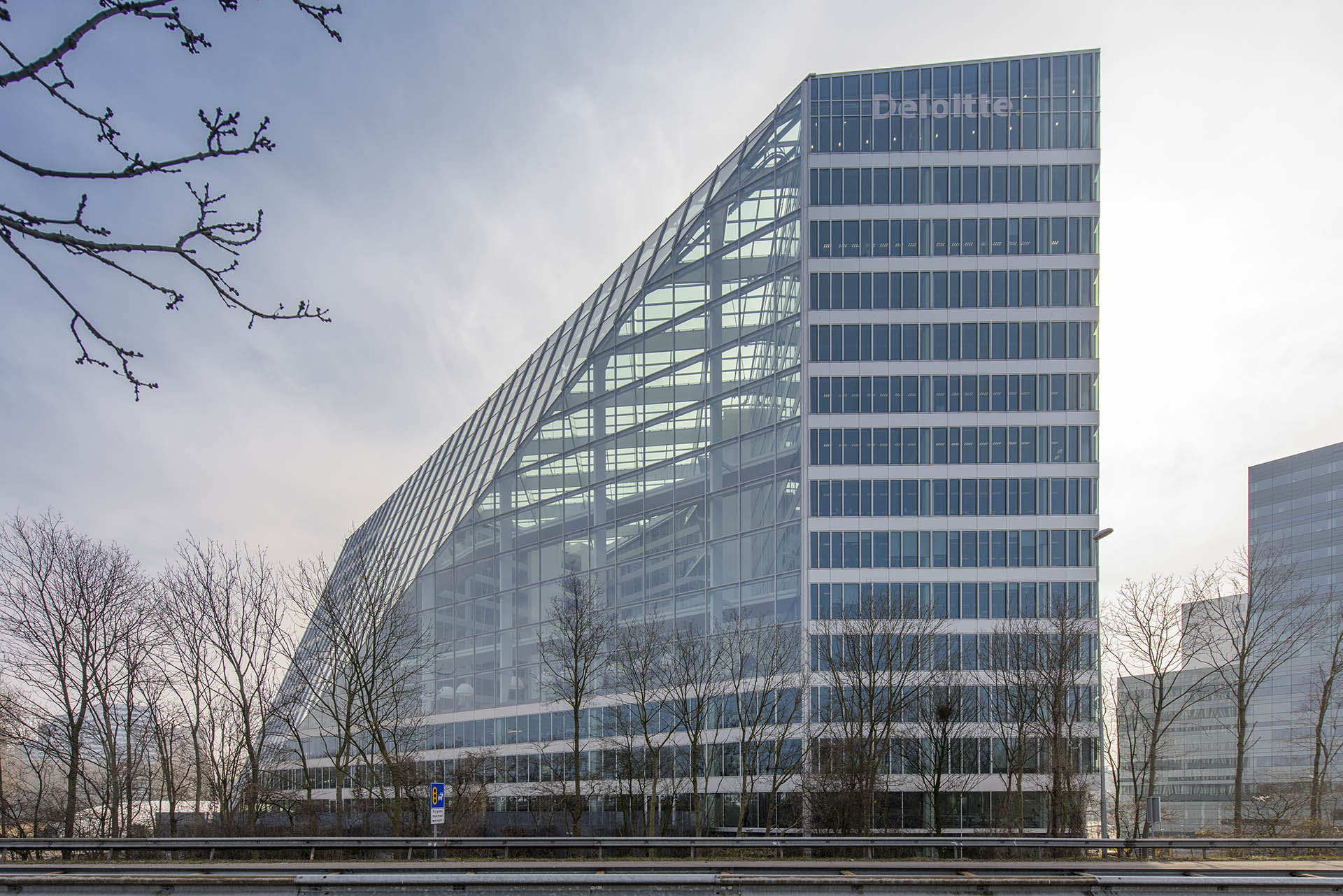
Year: 2015 l Location: Amsterdam, The Netherlands l Architect & Photo Source: PLP Architecture
The Edge is not only considered one of the smartest buildings in the world—boasting 28 thousand sensors—but it is also the greenest, receiving a sustainability score of 98.38% percent from BREEAM. This building works with its occupants to save time and resources, knowing everything from what they take in their coffee to their preferred lighting and heating. The sensors ensure the highly efficient LED panels only power on when an area is in use.
The lighting’s low power requirements paired with the large checkerboard of solar panels on the exterior south wall and the roof help this unique office space use less power than it generates. The sensors also enable the cleaning robots and crew to focus their energy on areas with heavier use, saving cleaning resources and staffing. Additional sustainable systems in this building include a rainwater system to power toilets and water gardens and a water-powered heating and cooling system.
4. Bahrain World Trade Center
Source: Charles-Adrien Fournier
Year: 2008 l Location: Manama, Bahrain l Architect: Atkins
The futuristic design of the Bahrain World Trade Center (BWTC) uses the power of its landscape—the Arabian Gulf—to minimize its environmental impact. The unique sail shape of this 240m building isn’t just aesthetically pleasing. In addition, the sides act as aerofoils that accelerate and funnel the sea breeze toward the three prominent wind turbines. As a result, the turbines generate approximately 15% of the building’s electricity. Furthermore, the cooling system that works off seawater contributes to the low carbon emissions of the building. This system works in tandem with the reflective pools at the base of the building that help lower temperature through local evaporation cooling.
5. Museum of Tomorrow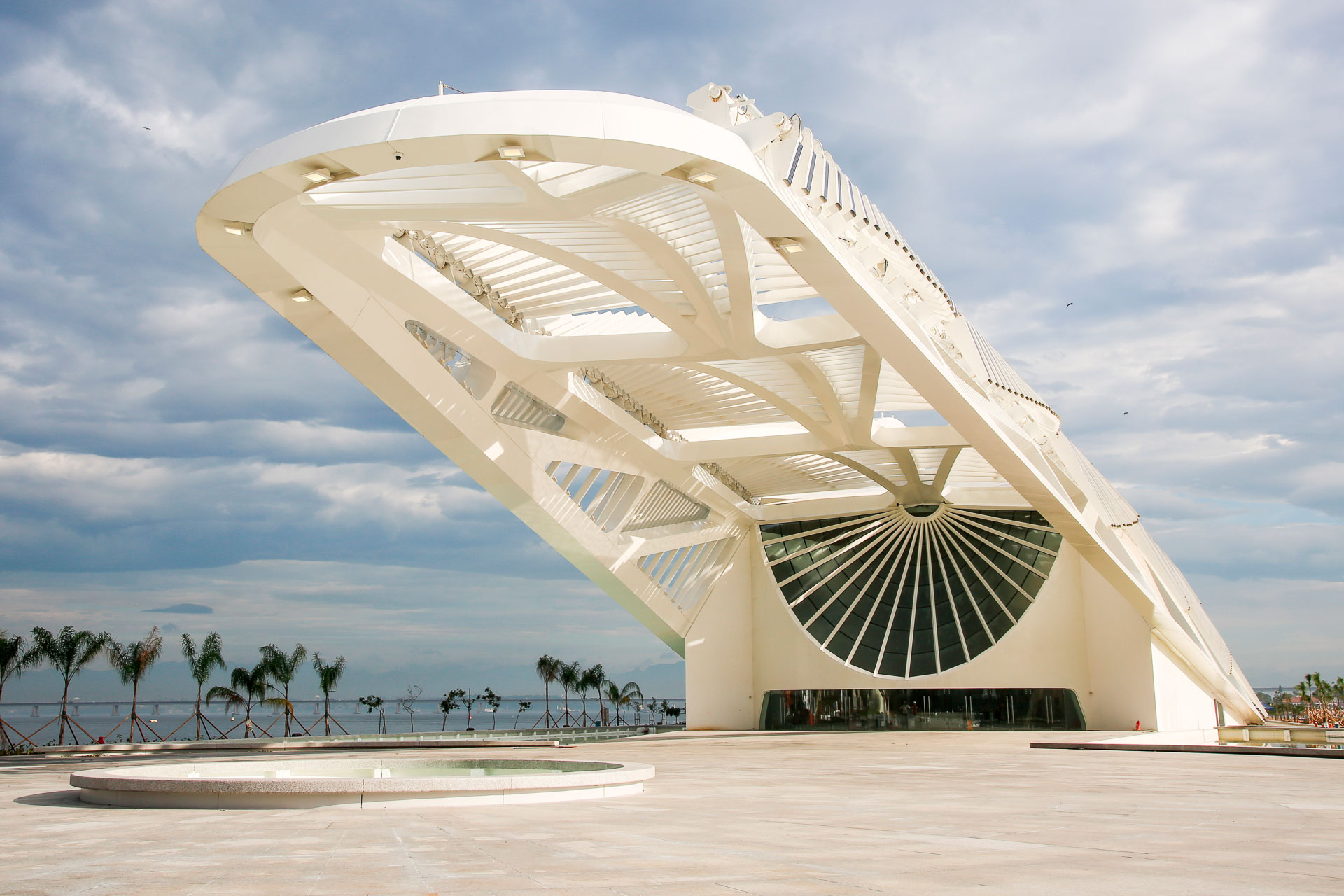
Year: 2015 l Location: Rio de Janeiro, Brazil l Architect & Photo Source: Santiago Calatrava
Rio’s Museum of Tomorrow (Museu do Amanhã) embodies green architecture inside and out. While its adjustable solar panel fins and cooling reflective pools integrate flawlessly into the outward neo-futuristic design, under the surface you will find a highly efficient air conditioning system. This system utilizes local resources, running on cold water pumped from the nearby Guanabara Bay.
6. The Green Building 
Year: 2009 l Location: Louisville, KY, USA l Architect & Photo Source: (fer) studio
Sitting in the heart of NuLu, Louisville’s art district, The Green Building is a prime example of adaptive reuse architecture. The 115-year-old former dry goods store had long outlived its original purpose. It was redesigned as a multipurpose center with a dance bar, event spaces, an indoor-outdoor courtyard, an art gallery, and office spaces.
While the masonry shell still holds its vintage charm, the interior is now a modern haven flooded with natural light thanks to the expansive windows. Many renewable energy systems were implemented to further reduce energy costs, such as solar panels, denim insulation, and geothermal wells. The Green Building was the first commercial building in Louisville, KY to achieve an LEED platinum certification. It is 73% self-sustainable in terms of energy production.
7. Shanghai Tower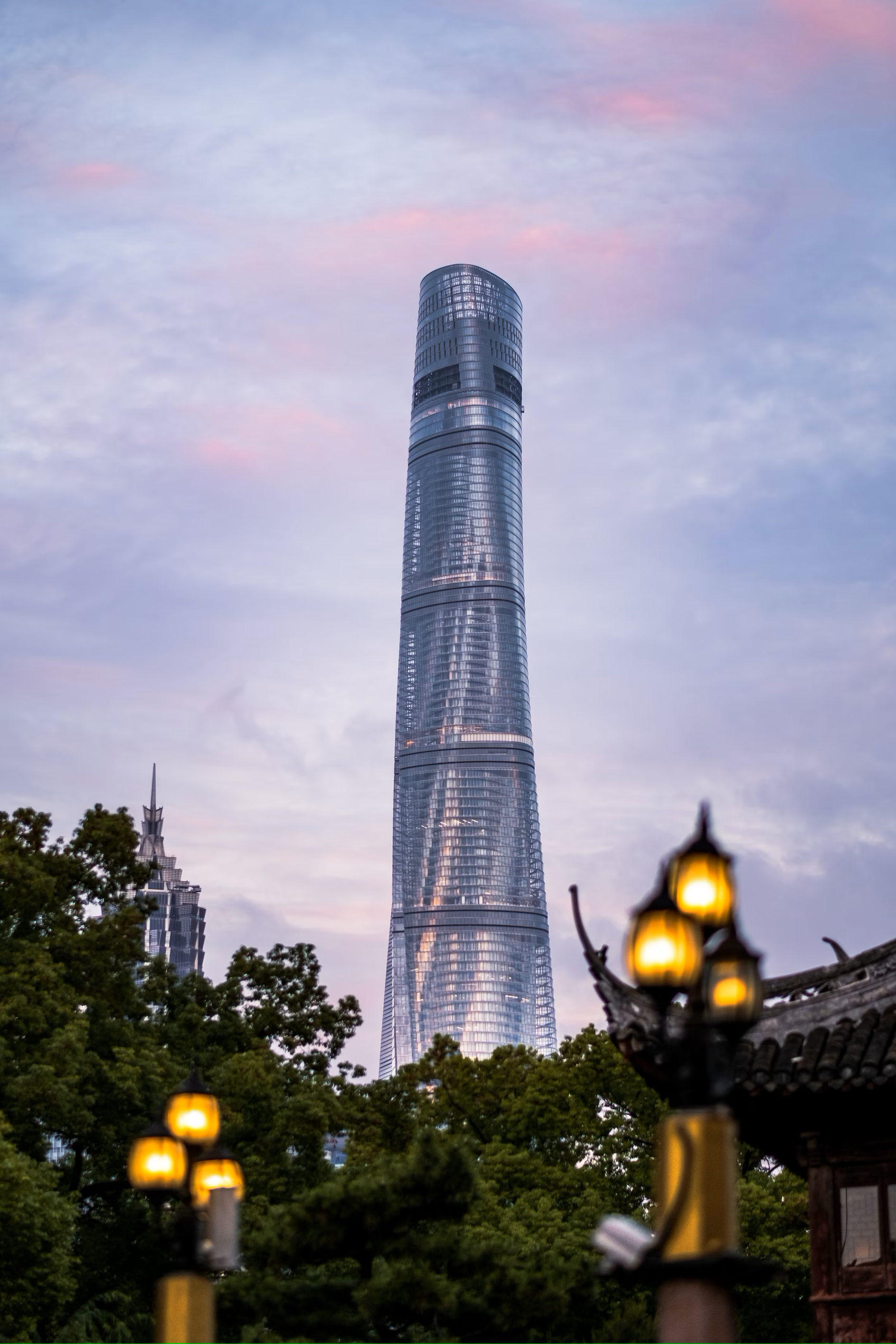
Source: Wenhao Ryan
Year: 2014 l Location: Shanghai, China l Architects: Marshall Strabala & Jun Xia (Gensler)
Shanghai Tower is the highest skyscraper in China and the second highest in the world, standing 632 meters tall. This premier tourist attraction’s spiraling cylindrical shape is encased in two layers of glass—an insulation method similar to a Thermos. Additionally, this sustainable design includes solar panels, a water recycling system, and wind turbines for further energy savings.
Check out Energy5’s content to learn more about sustainability.
INDUSTRIES: Architecture, Buildings, MEP Engineering







